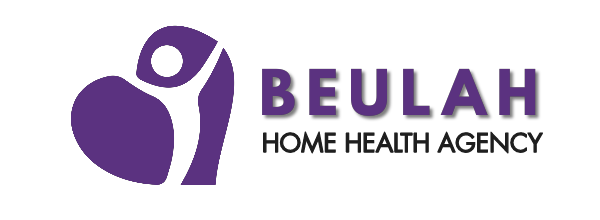Beulah Home Health Specialty Programs:
Goals of ALL Specialty Programs
Decrease in hospitalization and need
for emergent care
Decrease in occurrence of distressing
symptoms
pain, dyspnea, chest pain, fluid overload,
activity intolerance, anxiety, sleep
disturbances, etc
Increase in quality of life indicators
Depression, financial distress, spiritual
distress, etc.

Goal #1: Decreasing Hospitalization sess’ and Emergent Care Needs
29% of all Home Health admissions result in
re-admission to hospital Most of those are within the first 2 weeks of
Home Health service Beulah Home Health implements specialty
programs with specific interventions to decrease
this number Front-load Skilled Visits Beulah Home Health front-loads skilled visits to
ALL patients admitted to:
The Cardiac Program
The Palliative Care “Bridge” Program
The Diabetic Program
Orthopedic Program
the idea is to catch symptoms early enough to
intervene at home, thus eliminating the need for
emergent or hospital care
Plan of Care Interventions: Palliative
Psych/Social eval
PT/OT referral if pt requires assist with ADL’s
HHA for assist with ADL’s
Continuum of staff for hospice transition
Focus on symptom management
Close physician contact
Plan of Care Interventions: Cardiac
We make sure every patient has a scale that they are ABLE to
use.
Dietary eval/education
We begin instruction on admission of:
. Monitoring daily weights
. Monitoring nutritional intake/sodium intake
. Cardiac medications Compliance
. PT/INR tracking. Fingerstick testing available for those on
warfarin
. Education on when to access/ call home health as opposed to
calling 911
We complete a Risk Assessment for Emergent Care on
admission
We follow up within 24 hours to assess for complications,
provide further teaching and complete the individual Plan of Care
based on those findings
Plan of Care Interventions: Orthopedic
Physical therapy evaluation
Occupational therapy evaluation as needed
PT/INR tracking. Fingerstick testing available
We begin instruction on admission of:
. Signs and symptoms of infection
. Pain medications need
We complete a Risk Assessment for Emergent Care
on admission
We follow up within 24 hours to assess for
complications, provide further teaching and complete
the individual Plan of Care based on those findings
Plan of Care Interventions: Diabetic Care
We make sure every patient has a Glucometer that they are able to
use.
We work with their primary care physician and insurance company
Dietary eval/education
We begin instruction on admission of:
. Performing fingerstick blood glucose tests
. Monitoring nutritional intake
. Diabetic medications and compliance
We complete a Risk Assessment for Emergent Care on admission
We follow up within 24 hours to assess for complications, provide
further teaching and complete the individual Plan of Care based on
those findings
Goal #2: Decrease distressing symptoms
Assess and ACT:
Pain assessment
. We never leave a patient reporting over 5/10 without a call
to physician.
. We follow up within 24 hours any time regime changed
Dyspnea assessment
. We use 0-10 scale,
. OT/PT consult for energy conservation
. 02 evals and orders
Assess for s/s wound infection every visit
Assess daily weights for changes every visit
Goal #3: Improve Quality of Life indicators
Patients answer questions related to Quality-of-Life on
admission and at intervals throughout their episode.
Evidence of depression, financial or spiritual distress result
to call to their physician, and a recommendation to consult
whomever their Spiritual Counseling is if any.
Sometimes physical symptoms are often difficult to control in
the presence of other distress.
Sometimes a holistic approach increases efficacy in
managing physical manifestations, such as pain, dyspnea
and anxiety.
